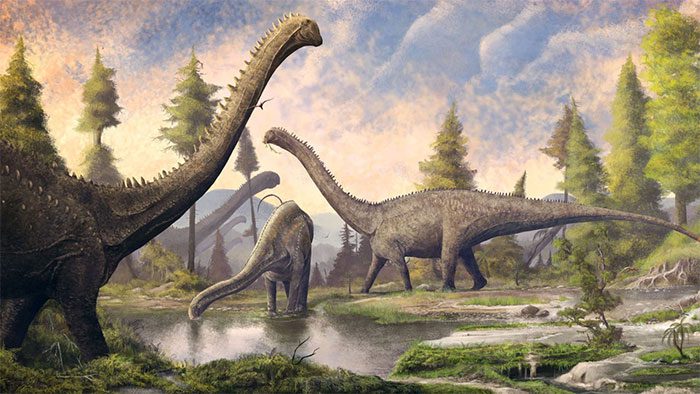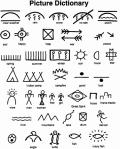Chinese paleontologists have unearthed and examined three skeletons and five eggs belonging to the large and mysterious “Gui Zhou Dragon” from the Jurassic period.
According to research published in the scientific journal National Science Review, this creature is scientifically named Qianlong shouhu.
Here, “Qianlong” translates to “Gui Zhou Dragon”, while “shouhu” means “to protect,” referring to the preservation of the skeletons and the eggs containing embryos together.

Giant sauropod species – (Photo: SCIENCE).
According to Sci-News, the Gui Zhou Dragon is a type of sauropod dinosaur, which is a family of long-necked, herbivorous dinosaurs characterized by their massive bodies supported by four pillar-like legs, representing the largest animals ever to walk the Earth.
The fossils unearthed in the Ziliujing Formation in Guizhou Province, Southwest China, are merely smaller specimens within this family, yet they reach lengths of up to 6 meters and weigh approximately 1 ton.
However, what captivates paleontologists the most are the eggs. These are the oldest known fossilized eggs with a soft shell discovered in the world, particularly valuable due to the intact embryos preserved within.
Paleontologist Fenglu Han and colleagues from the China University of Geosciences stated: “The embryos exhibit some differences compared to the adults, such as a longer skull and a vertically oriented snout.”
Biometric analyses also show that the hatchlings would walk on four legs, while adult Gui Zhou Dragons moved on two legs.
Features of this fossil site indicate that the Gui Zhou Dragon was a social nesting species, a reproductive behavior commonly seen in other sauropods.
Their eggs also provide important evidence of how eggs evolved from the theropod dinosaurs to the ancestors of birds.
The leathery shells of these eggs support a long-standing hypothesis that early animal eggs could have had soft shells, evolving over time into the hard-shelled state seen in modern bird and poultry eggs.
This fascinating group of creatures from Guizhou lived approximately 200 to 193 million years ago, representing the early Jurassic period and marking the first appearance of gigantic organisms from the “Age of Monsters.” Early dinosaurs from the preceding Triassic period were generally small, while the later Cretaceous period was filled with oversized dinosaurs.
Among them, the largest sauropod relative of the Gui Zhou Dragon is the titanosaur, with lengths reaching dozens of meters, and the largest specimen ever discovered could weigh nearly 70 tons.





















































